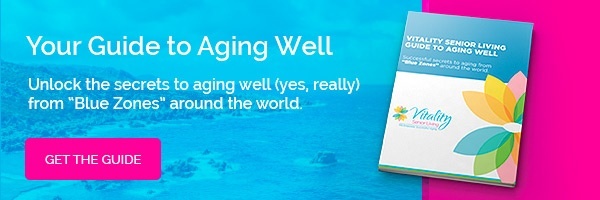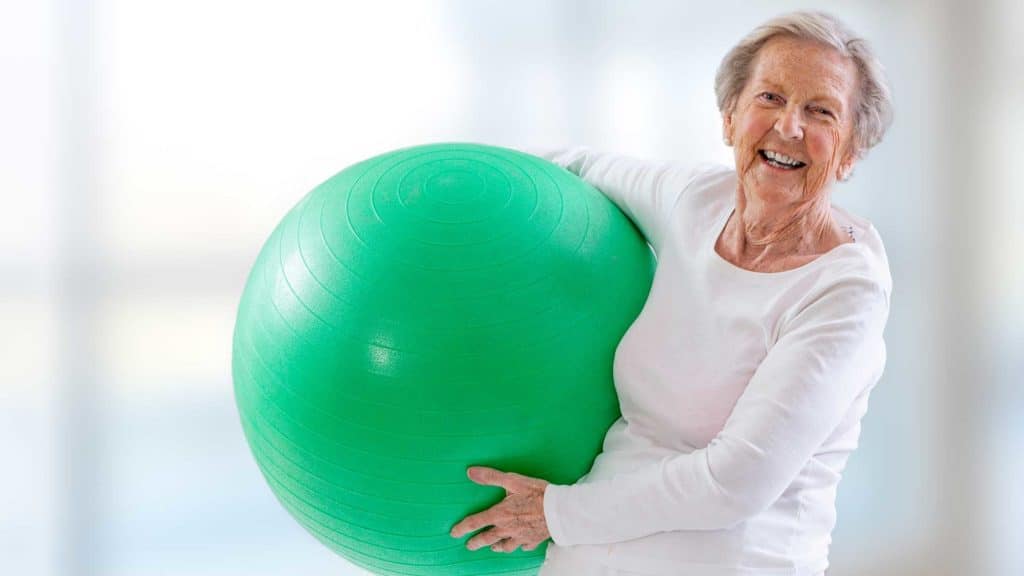If the gym has never been your friend, you’re in luck. Most residents in Blue Zones®, regions in the world where people live the longest, don’t use them either. But that doesn’t mean that fitness isn’t a priority, or a big part of why they live as long as they do. Here’s how they incorporate fitness into everyday life and how you can do the same to support successful aging.
A Sedentary Lifestyle Puts Seniors at Risk
First let’s talk about why fitness is so important as you age. We all know it’s good for you, but you may not realize how bad NOT exercising can be. A sedentary lifestyle is one with little to no physical activity and/or primarily engaging in activities where you sit or lie down such as reading or watching TV. And it’s so common for seniors that it has been dubbed “the sitting disease,” with 67 percent of adults aged 60 and older sedentary for at least 8.5 hours a day according to the U.S. National Health and Nutrition Examination Survey.
This puts you more at risk for a number of conditions such as high blood pressure, stroke, cardiovascular disease, some cancers, Type 2 diabetes and even cognitive decline. Plus, bone loss may progress faster, you may fall easier and may have more trouble performing daily activities due to loss of muscle tissue. Beyond the physical, you’re also more at risk of depression.
Fitness in Blue Zones
Research in Blue Zones’ regions – Sardinia, Italy; the Greek island of Ikaria; Loma Linda, California; Nicoya Peninsula, Costa Rica and Okinawa, Japan – has found that residents share similar lifestyle traits known as the Power 9®. We’ve discussed all these traits in past blogs [link], but one specifically relates to fitness: Move Naturally.
In these regions, residents “don’t pump iron, run marathons or join gyms. Instead, they live in environments that constantly nudge them into moving without thinking about it.” For example, they often lack modern conveniences for house and yard work, and as such, must do it themselves.
Fitness for Seniors
So what’s the first step, so to speak, on incorporating these practices in your life? The National Institute on Aging recommends at least 150 minutes of moderate-intensity physical activity throughout the week in sessions of at least 10 minutes duration across four categories of exercise: endurance, strength training, balance and flexibility.
You could break this down into approximately 20 minutes per day, seven days per week; 30 minutes per day for five days per week; or 50 minutes per day for three days per week; whatever’s most convenient. However, before you start any new fitness routine we recommend checking with your doctor to see if you have any restrictions due to medications or chronic conditions.
Let’s talk specific tips across each category with the Blue Zones’ approach in mind:
- Endurance – Try brisk walking, dancing, jogging, swimming or biking – even yard work or climbing stairs count! Use a pedometer to track your steps, working up to 10,000 or more a day.
- Strength – Get yourself some two pound weights and keep them handy for arm curls while watching your favorite show; or do some pushups while waiting for coffee to brew in the morning.
- Balance – Easy ways to improve balance include standing on one foot while waiting in line, heel-to-toe walking to get the mail or taking a Tai Chi class.
- Flexibility– Try one or two types of stretches for each region of your body such as your shoulders, upper arms and calves. Do each stretch 3 to 5 times with a 20 to 30 second hold.
Most importantly, keep moving, limit the amount of time you are sedentary and make it fun, as you’re more likely to keep doing something you enjoy. Listen to music, podcasts or audio books while exercising, take your grandkids to the park to play (or your dog) and incorporate it into things you already love like gardening. You can also look at fitness as a social opportunity and recruit a buddy. In fact, according to the American Psychological Association, when two people strive towards the same—or similar—goal; both are more likely to achieve it.
And always remember to spend about five minutes before and after you exercise to warm up and cool down. This gives your muscles a chance to get ready and helps to prevent injury and soreness later.
Senior Living Supports Fitness
If you feel like all this is too much to take on at home, or if you have mobility issues and/or a lack of transportation; there may just be an easier way. Senior living gives you plenty of fitness opportunities right outside your door and the support to help you get started. In fact, a key component of our Vital Living Program is fitness. We offer:
- Health and wellbeing services
- State-of-the-art fitness center and pool
- Fitness classes including yoga and tai chi
- Onsite spa and salon




